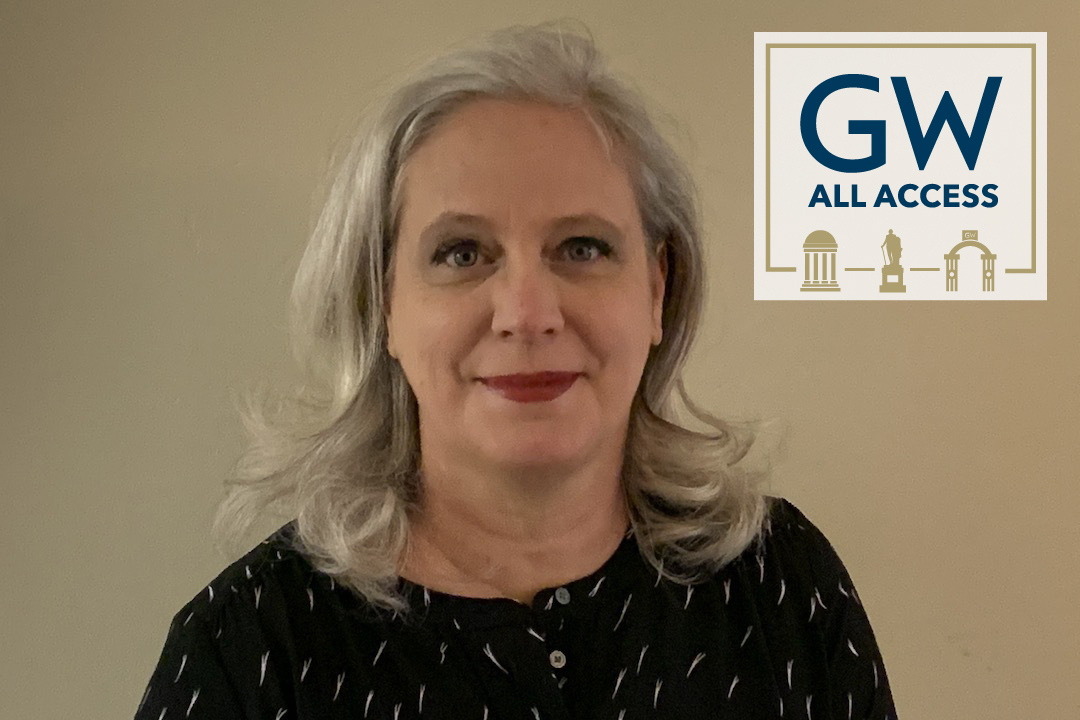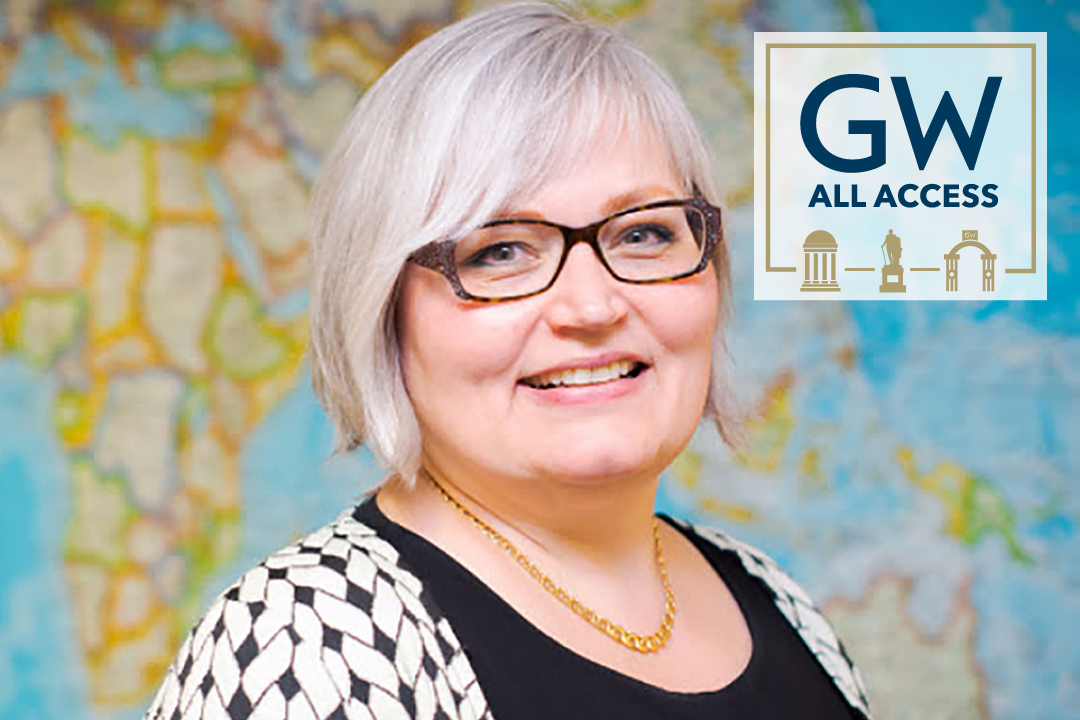A series from GW Today shows how GW is preparing for the fall semester and a high-quality academic experience.
By Tatyana Hopkins
Having witnessed the ever-evolving guidelines on COVID-19’s personal protection equipment and treatment protocols while serving as support for nurses and other healthcare workers caring for patients on the frontlines of the pandemic at MedStar Washington Hospital Center, Megan Brown, a clinical education instructor at the George Washington University School of Nursing, will soon introduce first and second-year GW nursing students to the hospital’s fast-paced environment in the fall.
“I take the students into the hospital setting, and I help them understand the practical part of their nursing education and support them with medication administration, patient care, assessment and documentation [of care],” she said.
Before COVID-19, the nursing school took students into the hospital setting for either 10 nine-hour days or nine 10-hour days. Now, students will alternate 10 class periods between virtual and in-hospital experiences.
Ms. Brown said while some clinical instruction will proceed online, the course will meet the same fundamental learning objectives as hands-on experiences such as patient assessment skills and adult care.
“To really be a good nurse, you’re going to have to be able to take information, synthesize it and then figure out what to do with it,” she said. “We will really work to develop their critical thinking.”
Most importantly, she said students will learn how to have intimate conversations with patients that are critical to their treatment without judgement. She said helping students get through tough conversations with patients without prejudice is a key part of teaching them good care.
“Many of our students haven’t had the opportunity to have exposure to sick people,” Ms. Brown said. “It’s really hard to give good care with grace and dignity when you have all of these preconceptions and unrecognized bias in the back of your mind.”
Over the course of her career, Ms. Brown has had clinical experience in medical and surgical intensive care, neurology and hospice care as well as experience in home health care, project management and nursing informatics.
She will also teach pathophysiology alongside Mark Tanner, assistant dean for the undergraduate nursing program and clinical associate professor, for first-year nursing students in the fall. The course helps students learn how to make diagnostic assessments of common disease conditions affecting patients across the lifespan.
From there, students begin to apply those principles to systems in the body. For example, students learning about the process of inflammation will learn how the condition affects various parts of the body such as the cardiac and pulmonary systems.
“If [a nurse] is elevating your feet, there’s some science behind it,” Ms. Brown said. “It’s not just a feel good, make me look busy kind of activity. It has a value and a purpose. We’re showing students how things break in the body so that they can recognize these fundamental principles when they do give a medication and when they do a nursing intervention.”
Having taught the course online in the spring, Ms. Brown said she is fully prepared to make it engaging.
She and Dr. Tanner will do away with live lecturing and instead will offer lectures in “bite-sized” pre-recorded videos alongside learning assessment assignments for students to watch and complete on their own prior to class.
During class, students will be split into groups and given a case study and unifying problem to work on together to apply the concepts in each lecture.
“There are a lot of group projects,” Ms. Brown said. “Nursing is a team sport.”
Students will also complete a cumulative project, a concept map that shows the science of how a disease cascades through the body and what medical interventions would be purposeful at various states of disease.
“While pathophysiology is a science, it’s actually a tool,” Ms. Brown said. “That is if you really learn it, you can bring it to work every day, unpack it and use it to understand what’s going on.”




